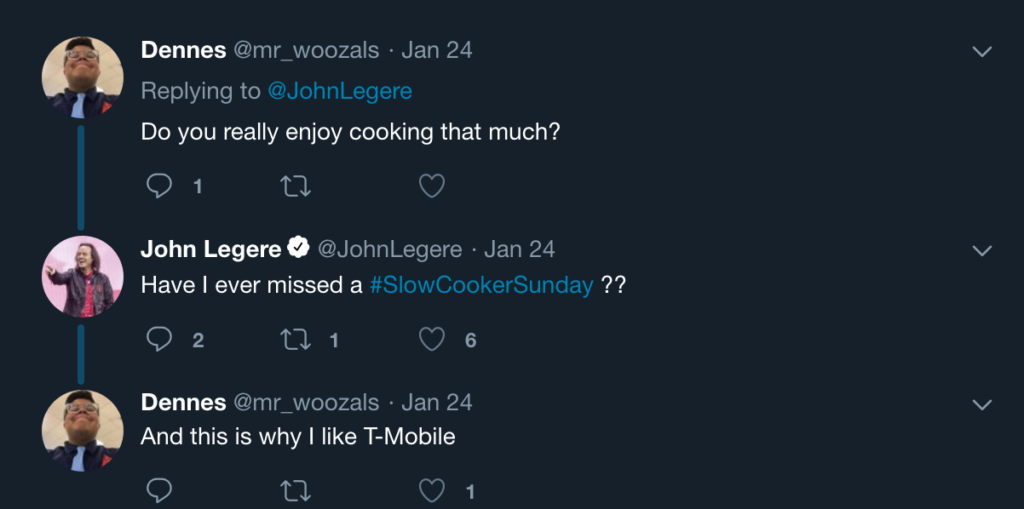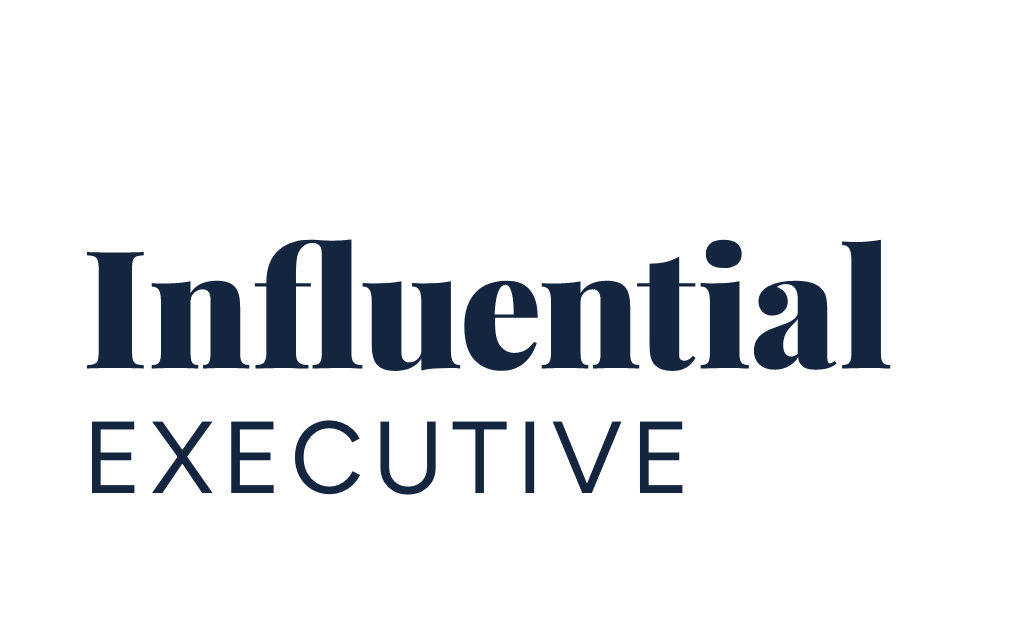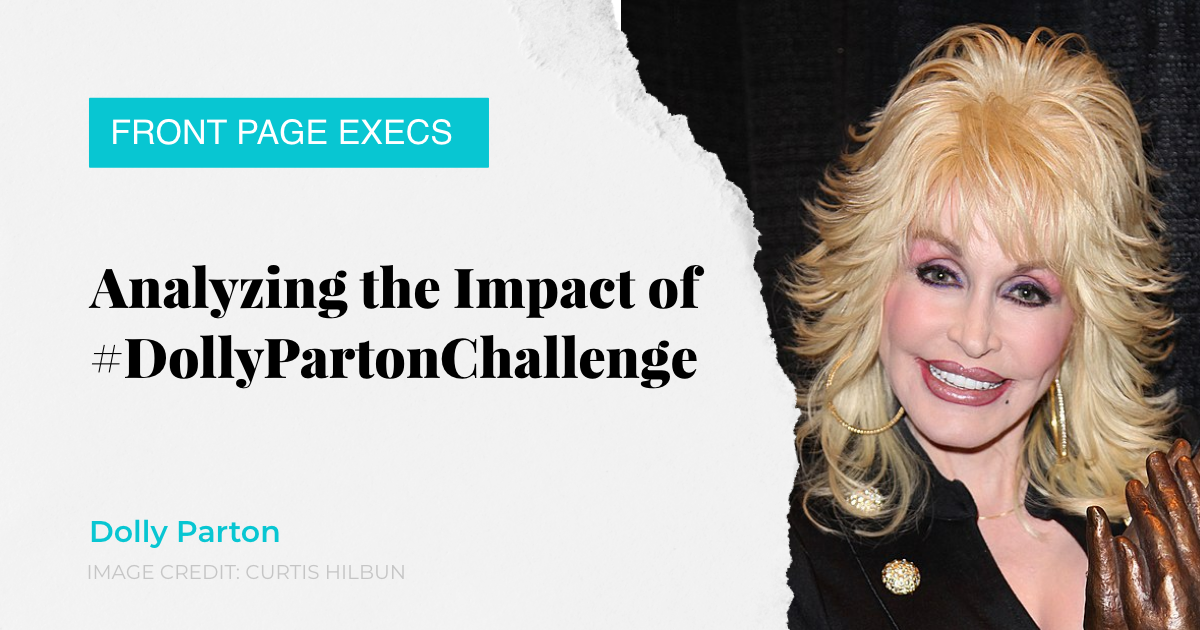Over the past week, one funny meme has gone viral across social media. With over 500,000 posts on Instagram alone, the origins of the meme came from an unlikely source–74-year-old country singer, Dolly Parton. Her original posts have received a lot of engagement so far. On Twitter, her post has almost 40,000 retweets and over 250,000 likes. Her post on Facebook has garnered almost 3,000 comments and over 14,000 shares, while on Instagram, her post has received almost 15,000 comments and over 1.1 million likes.
Get you a woman who can do it all 😉 pic.twitter.com/sG4OHpVgxM
— Dolly Parton (@DollyParton) January 21, 2020
The meme has spread across social media platforms with adaptations created by brands, celebrities, and the general audience using #DollyPartonChallenge. In this article, we will take a look at what makes this meme so popular, and some executives who have posted their own version.
The #DollyPartonChallenge Meme and Why it Spread
The #DollyPartonChallenge is a collage of four images, each referencing a specific social media platform. The original template references LinkedIn, Facebook, Instagram, and Tinder, though some versions use different social media platforms.
The format pulls together four very distinct social apps. LinkedIn is more business oriented with a focus on making professional industry connections. Facebook is generally more oriented towards sharing content with friends and family. In many of the memes created that use this format, Instagram tends to emphasize personal hobbies, photos with friends, or the individual posing for a picture. Lastly, the Tinder quadrant usually features more risqué content compared to the other three images.
The Silverado does it all! #DollyPartonChallenge pic.twitter.com/hlppP4ZPtG
— Chevroletarabia (@ChevroletArabia) January 26, 2020
The meme is meant to show four different sides of the individual (or in some cases, an object) and part of what makes this content so popular is how adaptable it is. We have seen the format used primarily for individuals, but it has been used by brands as well, such as in the tweet above.
Now, let us take a look at a few executives who have posted their own version of the #DollyPartonChallenge meme to their social media. As we will see with the three examples below, some choose to stay close to the original version, while other executives that are featured have put their own personal spin on Parton’s meme.
Barbara Corcoran
First on the list is CEO of Barbara Corcoran Inc. and Shark Tank personality, Barbara Corcoran, who posted her own version of the meme to her Instagram page.
Although she tags Dollar Parton in her post, Corcoran does not use #DollyPartonChallenge, which would help improve the post’s reach. With almost 14,000 likes and 500 comments, this post has much higher engagement as compared to other posts on her Instagram. There are already several hashtags on Instagram related to #DollyPartonChallenge, with the main one having almost 500,000 posts so far. Tagging a very popular hashtag and using similar but more niche hashtags is an effective way to diversify hashtag usage and maximize a post’s reach.
In terms of the content itself, Corcoran has used a similar format and gone with similar photograph selections as Parton’s original post. While Corcoran has not taken any creative license when creating her own version, the post has successfully capitalized on the popularity of the trend and improved social media engagement.
Oprah Winfrey
Next on our list is the chairman and CEO of OWN (Oprah Winfrey Network), Oprah Winfrey. Unlike the other executives on our list, her contribution to #DollyPartonChallenge comes from the Oprah Magazine Instagram account, rather than her own personal Instagram account. One potential reason for this is that her personal account is highly curated, so meme content would look visually awkward when posted to her feed. In addition, content on Oprah Magazine’s Instagram also features funny content from time to time, making memes a better fit for that brand account.
In her post, she has tagged Parton and used the most popular hashtag associated with the meme, #DollyPartonChallenge. Engagement with the post is high, with over 36,000 likes and 1,100 comments. On average, the posts on the brand account receive quite a lot of engagement anyway, with the lower end sitting around 15,000 likes and more popular posts at 35,000 likes.
Winfrey’s post takes a more humorous approach, especially with the Instagram and Tinder photos. Creating original content and participating in viral memes is an effective way for executives and leaders to show their personality, especially if the general audience is only familiar with their business side.
John Legere
Last but not least, for readers who remember our previous Executive Spotlight article on John Legere, it should come as no surprise that “Mr. Magenta” posted his own version of the meme. The CEO of T-Mobile donned his usual #SlowcookSunday outfit in all four photos, but a closer look at his apron shows the executive’s creativity in interpreting the meme.
So, I heard about this #DollyPartonChallenge…definitely nailed it pic.twitter.com/5IN8Ft9C98
— John Legere (@JohnLegere) January 25, 2020
For executives who are closely attached to their brand, such as those who actively mention their own company in their social media posts, funny and engaging content like this often translates to a more positive brand image. As an example, here is a screenshot of a Twitter exchange between Legere and a user commenting on his #DollyPartonChallenge meme.

As a public face for the T-Mobile brand, Legere is not just its CEO, but also one of the most important spokespeople for the company. His usual funny content makes him more relatable and approachable, so his participation with the #DollyPartonChallenge is a natural fit.
Our Tips for Engaging with Viral Content
For content such as the #DollyPartonChallenge, it is especially important that executives act swiftly. When a meme’s time is over and it is not as popular among the general public, posting too late on social media can have a negative impact as users will think the executive is not up to date with current events.
Another tip we have for executives is that they should not feel pressured to participate when memes go viral. If an individual is not known for posting funny or meme content, suddenly posting such content could have a negative effect as it may be seen as off-brand or out of character. For example, this particular content would not fit Paul Polman, who posts exclusively about social issues, like climate change.
Before posting meme content, executives should have a clear understanding of the meme’s purpose and messaging. When brands post memes but use them incorrectly, the general audience will feel as if the brand is simply trying to cash in on something that is currently trending, rather than trying to create engaging content.
When executives participate in timely viral events and post original content, this can greatly increase engagement, especially when posted using a platform’s best practices. This includes using relevant hashtags that will increase a post’s reach.
Is your marketing team ready to get your executive(s) on social media? Download our free guide on thought leadership to learn more about why having execs on social can help your brand achieve its business goals. In the meantime, why not follow Influential Executive on Instagram for interesting business stats, inspiring leadership quotes from today’s top executives, and more!


